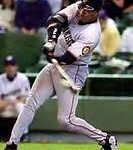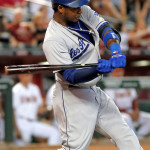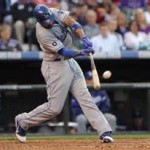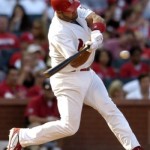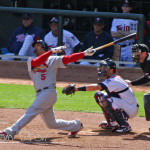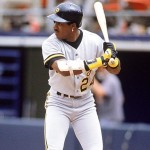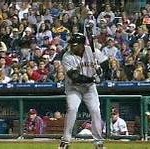Form Perfect Models in Thought…
Here are some fundamental questions to ponder when embarking on a true evaluation of proper hitting technique:
What is the relationship of the direction and flight-angle of the ball thrown by the pitcher with respect to the angle of the swinging bat and the force it exerts in the opposite direction?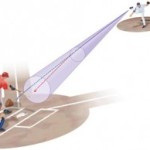
1. Unless a pitcher bends over, and down below a critical horizontal plane, and tosses the ball on a deliberately upward trajectory, every thrown pitch (100% of the time) is travelling in a descending line (or arc). It has been proven that even a Nolan Ryan fastball moves in a downward trajectory. Gravity and the fact that the pitcher is standing about a foot above the plane of the batter and Home Plate are the two primary reasons.
2. Is it logical to develop, and/or teach-learn, the body – mechanics that facilitate a swinging bat to move downward to strike at a downward-moving ball? This would seem, at the least, counter-productive for effective “Bats-man-ship.” “Back-spin,” will be more effectively produced by a bat whose solid and direct contact is at a point just below the center of the ball.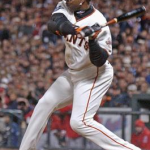
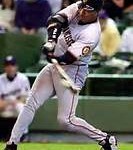
3. Does not every “Speed-Gun” register the fastest speed of a pitch at the point closest to the pitcher’s release of the ball? Hitting a baseball most effectively is determined by fractions of inches. Lunging forward to hit a ball 2 or 3 feet in front of home plate places the batter closer to the ball’s faster speed.
4. Does not the better hitter benefit significantly by keeping his head stationary as the 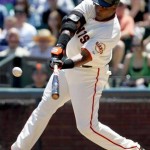
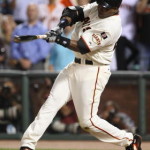
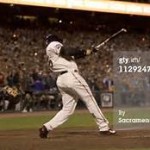
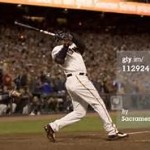
body rotates through the swing?
Lunging out at the ball in front of the plate has a tendency to distort the batter’s perception of the ball because the lunge creates excessive movement of the head, which houses the visual mechanism.
5. Does the strength of the swing come from the stride, forward lunge of the body, and extension of the arms? Or does it come from the rapid and controlled rotary transfer of weight that occurs after the front foot plants and the front knee begins straightening to help force the front hip backwards to allow the back hip to move quickly forward, with a 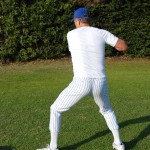
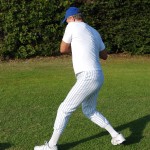
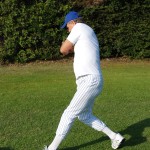
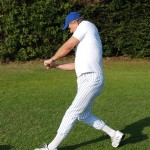
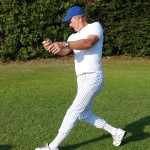
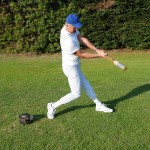
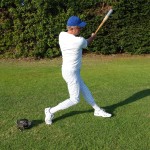
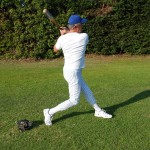 bent back knee?
bent back knee?
These actions lead the upper body into an orderly series of movements that precipitate a power surge directing the bat into the ball. The front knee straightens, and the back bent-knee rotates forward and downward on a pivoting back foot (specifically the outside of Big toe). The front shoulder shrugs upward and back, and accentuates the downward and forward action of the back shoulder. The lowered back shoulder facilitates a natural flattening of the bat, as it begins its approach to the striking area. Both arms await their duties in a semi-relaxed manner.
Before the body-weight transfer begins, as the ball is leaving the pitcher’s hand, the body starts to “gather”(brace itself). The front shoulder turns inwardly (just under the side of the chin), the knees stabilize, and the hands move slightly beyond the breadth of the back shoulder as the front arm begins to straighten. The entire body anxiously awaits the precise instant to “attack” the ball as it enters the “Zone.”
The “gathering” occurs at a slow, steady pace, to facilitate momentum for the quickest possible response at the moment of “weight-transfer.” At that moment, when the shoulder shrugs, the hands and bat are slanting in order to quickly level the bat to the plane of the ball and provide substantial range for making contact. The turning body provides a centrifugal force to allow the front arm enough momentum to easily snap to extension, as the bent back arm is starting its drive to fully extend itself and its “palmated” hand (palm up) through the contact-point.
At the “snap” of the front elbow, the medial side of its upper arm is flush against its corresponding breast, as contact is made with the ball. This assures that the power transfer from bat to ball is occurring within the confines of the main power source, the body. If the contact is made with front arm separated from the body, the power will be diffused. It should be obvious that the arm(s), acting independently from the body, has a diminished capacity for supplying power.
After contact is made, and both arms have extended with the bat’s impact through the ball on a slightly ascending plane, the proper follow-through is facilitated by the hands “rolling over” as the arms pull back to the body by the continued flow of the shoulders. 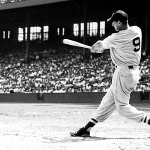
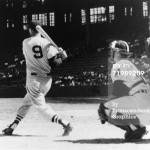
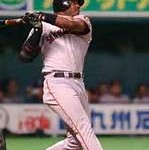
The back shoulder’s gradual, forward ascent reaches a parallel level to the front, and the arms settle in a bent position with hands slightly above the shoulders (ala Tiger Woods). The batter could release his top hand from the bat after the follow-through, like a Mark McGwire, Barry Bonds, or Albert Puljos (bat high).
If a batter’s follow-through ends with his 2 arms and hands below his shoulders, at his waist, this could mean that he is rolling his back shoulder over too quickly, as sometimes results in solidly hit grounders, bouncing balls, or looping line-drives. The “follow-through” does not create the flight pattern of the ball, but merely accentuates the trajectory, if the ball has been correctly contacted by the swing of the bat.
…And Look at Them Continually…
Consistency of batting effectiveness (efficiency in striking a baseball) has never been more highly demonstrated than by Barry Bonds, in the 2001season, as well as in 2002, 2003, and 2004. Throughout his Major League career, accolades were heaped upon him for what seemed like a remarkable consistency for slugging the ball better than anyone else, at least in the 1990s. No one besides Mark McGwire (in 1998) positioned himself more majestically at the plate than Barry Bonds in 2001 (almost as well in 2002, 2003, and 2004). Except for an extra 25-30 pounds of muscle weight, Barry looked as he always had, confident and supremely equipped to handle any type of ball the pitcher could throw.
The “Art” of hitting a baseball certainly could be defined in the context of describing the ideal hitter– “He is one whose bat most consistently contacts the ball in a manner that facilitates a straight and ascending “line-drive.”(To hit the ball in any other manner would be to miss-hit it.)
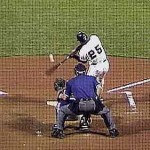
…Or you’ll never carve them out in Grand and Noble Accomplishments!
No one in Baseball had a more scientifically correct style for hitting a baseball than Barry Bonds. His extra power, during his last 7 years, catapulted him to a higher level than had been previously thought possible. When he wasn’t quite so strong, the balls he hit were careening off the walls instead of sailing over the fences. Is there anyone else smart enough to figure out how to duplicate his technique? (And, if Baseball wanted to retain optimal fan interest, it would have behooved the Commissioner’s office to enact a rule that would have prevented any pitcher from intentionally “walking” a batter on 4 straight pitches. If they did, Barry Bonds would most likely have hit 100 Home Runs in a single season.)
